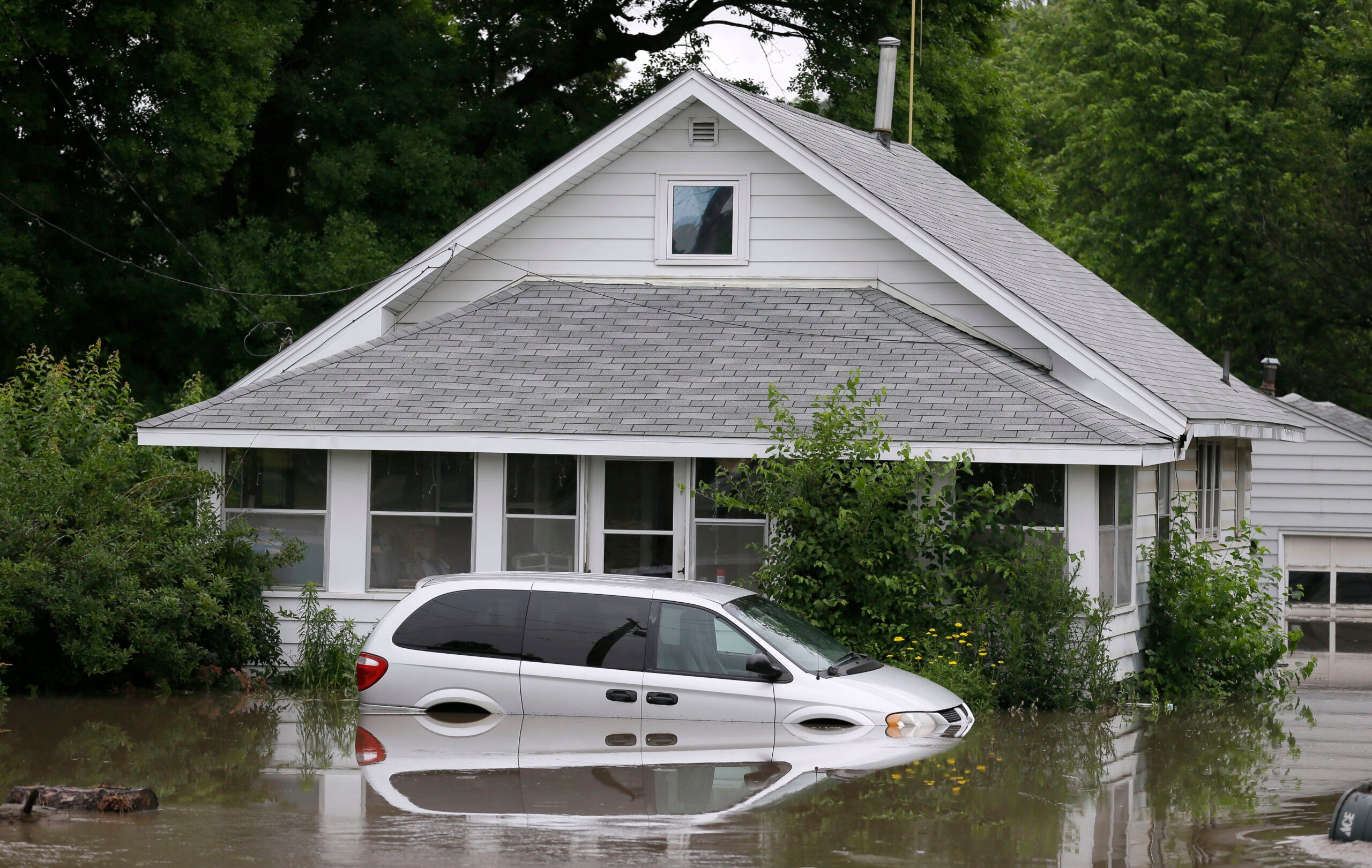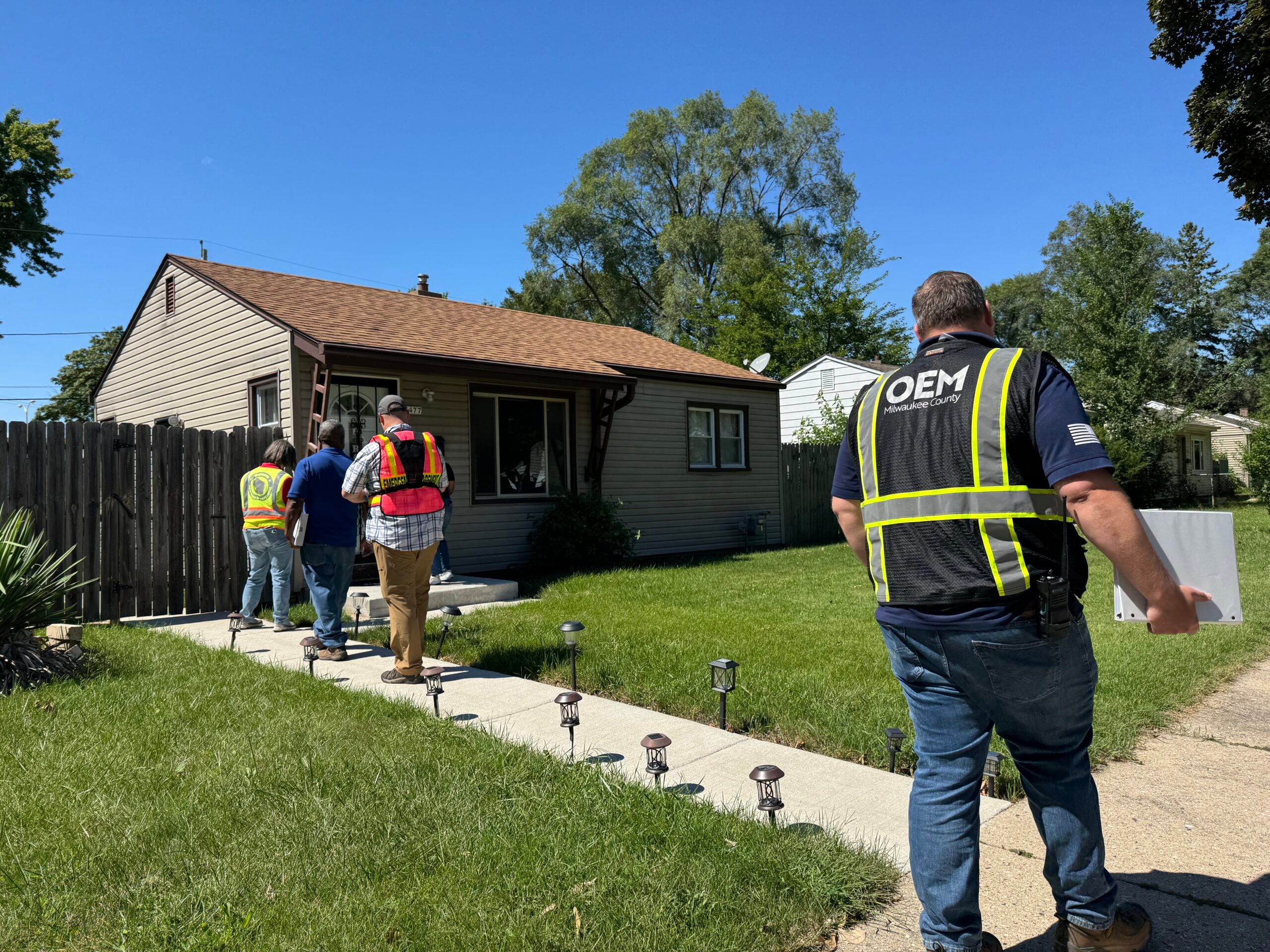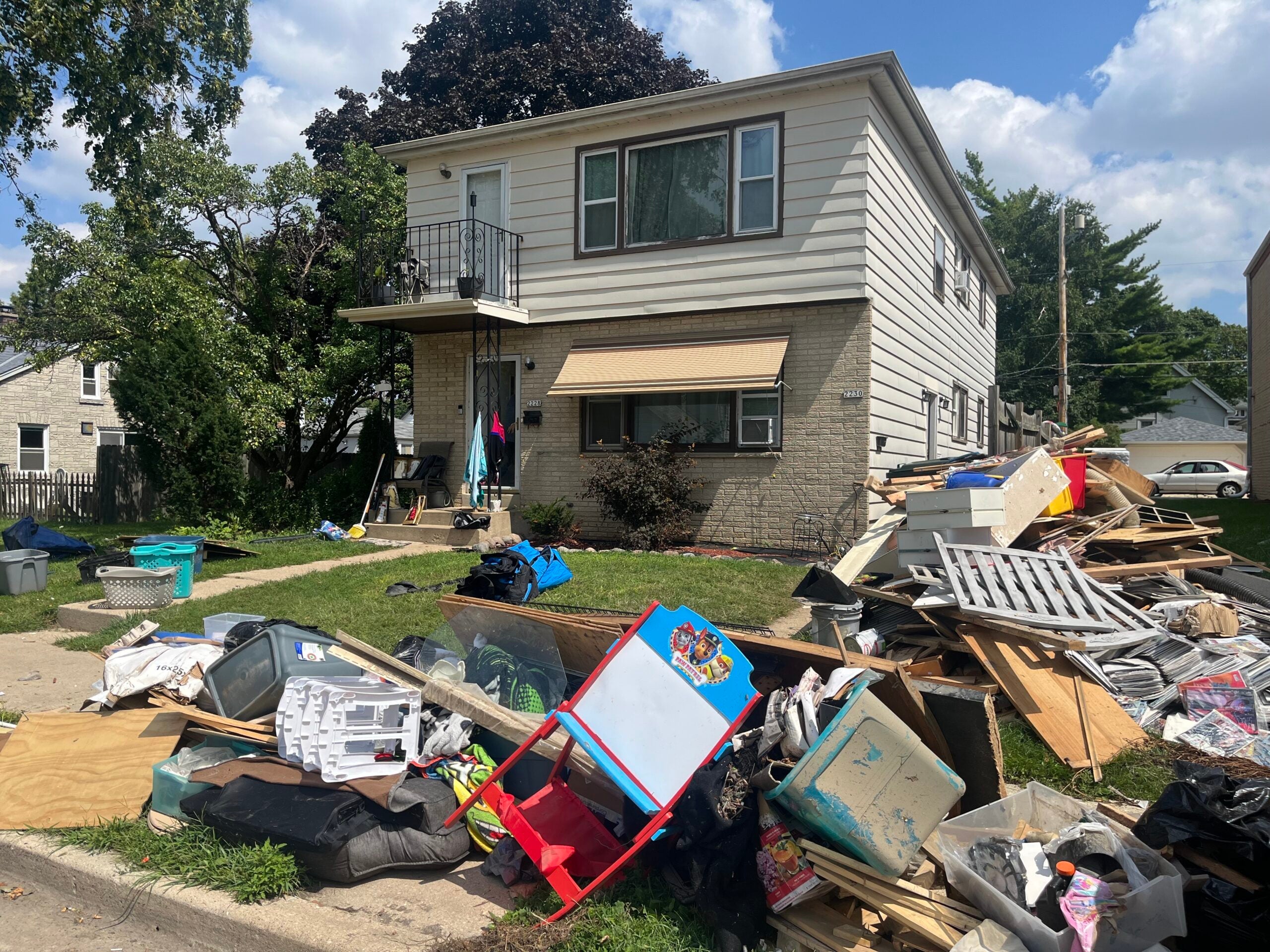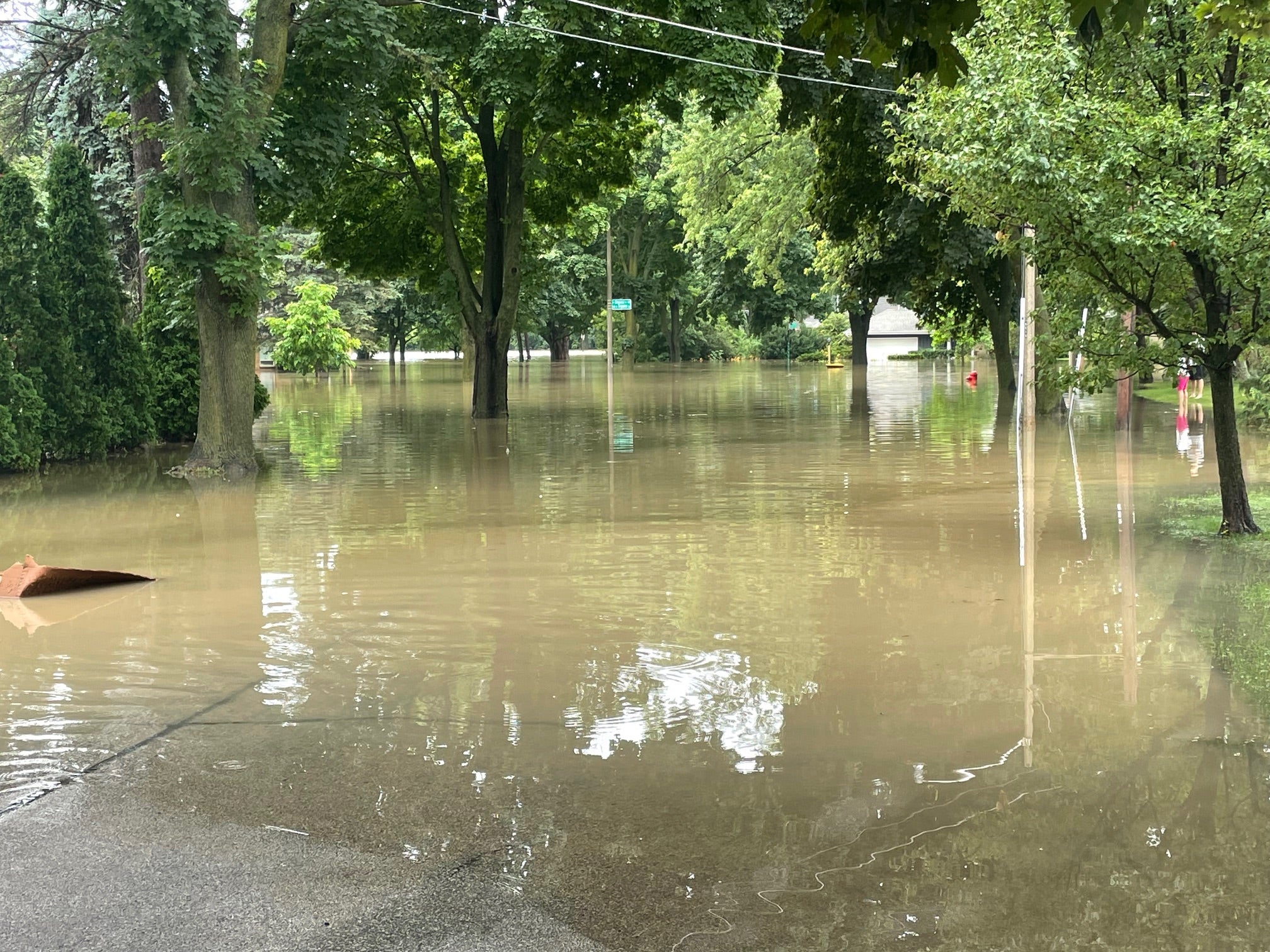As climate change continues to impact weather patterns, flooding outside of designated floodplain areas is becoming more common.
One way property owners can protect themselves is by purchasing flood insurance, said Sarah Smith, the director of public affairs for the Wisconsin Office of the Commissioner of Insurance.
Smith recently joined WPR’s “The Larry Meiller Show,” where she explained how flood waters damage property and pocketbooks, noting that even just 1 inch of water inside a building can cause $25,000 in damages.
News with a little more humanity
WPR’s “Wisconsin Today” newsletter keeps you connected to the state you love without feeling overwhelmed. No paywall. No agenda. No corporate filter.
“(It) might seem like a lot, but if you think about if your first level floods and that’s where you have your washer and dryer, you have furniture that’s sitting on the floor, all of those things get soaked to within the first inch. They all have to be replaced,” she said.
The average claim in 2019, she said, was $44,000.
“So if you kind of look at (the cost of the premium) compared to that average claim amount, that may help people reconsider their risk tolerance of whether they are comfortable going without this coverage or whether getting the coverage is the right move for them,” Smith said.
Flooding is happening more often in urban areas, especially as a result of climate change, said Sarah Rafajko, a floodplain management program coordinator with the state Department of Natural Resources, who joined Smith on the show.
She said instead of normal precipitation patterns, now heavier rainfalls are dropping a couple days’ worth of rain within hours. And more instances of flooding are occurring outside of mapped floodplains.
Average annual precipitation increased between 5 and 10 percent in most of the Midwest over the past 50 years, according to the U.S. Environmental Protection Agency. Rainfall has increased 35 percent during the four wettest days of the year. The EPA predicts these factors will lead to more flooding in Wisconsin over time.
As for now, flood insurance is required for anyone who owns property in a mapped floodplain. But anyone outside of that area isn’t required to have it.
“We hope that people will look at their property insurance and their renters’ insurance and make sure that they are covered in the event of a flood,” Rafajko said.
How flood insurance works in Wisconsin
Flood insurance can be bought through private insurance or through the National Flood Insurance Program, or NFIP, which is part of FEMA.
The NFIP offers coverage in addition to a homeowner’s insurance policy and can be purchased specifically for a building, for the contents inside a building, or both, depending on what the insured wants.
The goals of the NFIP, Smith explained, include reducing future flood damage and minimizing the need for outside help after flooding events.
“So, try to take some of that burden off of FEMA and put it into an insurance policy for what property insurers typically consider an uninsurable risk,” Smith said.
Smith said payouts from the NFIB trend significantly higher than what property owners might get after a disaster in grants or loans through FEMA.
Communities have to choose to participate in the NFIP. Most in Wisconsin do.
“It’s essentially an agreement where the federal government will provide flood insurance so long as the community will enforce floodplain management regulations,” Rafajko said, noting that the DNR provides a model ordinance that communities can adopt and open up the door for residents to receive flood insurance.
FEMA sets minimum standards for the way ordinances and building regulations work inside of a floodplain. Wisconsin adds more building standards, including for them to be built higher up with no encroachments in the floodway (the most sensitive area of the floodplain). Communities can adopt even stricter standards if they choose.
Communities with higher levels of flood mitigation — for example, buying up homes that have flooded repeatedly — can receive flood insurance discounts through the Community Rating System within the NFIP.
Fond du Lac, Eau Claire and Kenosha County are among the communities that qualify for the discount.
Next steps and what to know:
- Visit floodsmart.gov to learn about the NFIP and see your property’s risk level for flooding.
- There is a 30-day waiting period before policy holders can file a claim under flood insurance.
- Talk to your homeowner’s or renter’s insurance agent and ask if they can sell you flood insurance. About 90 percent of flood insurance policies in Wisconsin are written through local insurance agents.
- The definition of a flood, per the NFIP, is that it impacts two or more acres or two or more properties with overland flooding. So if seepage is your problem, flood insurance will not cover damage from that.






